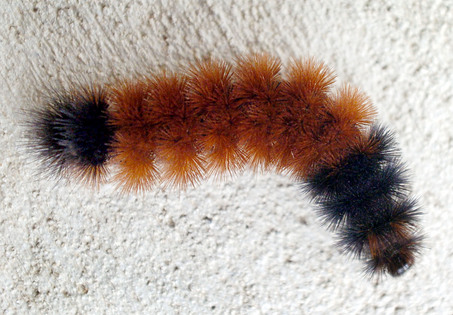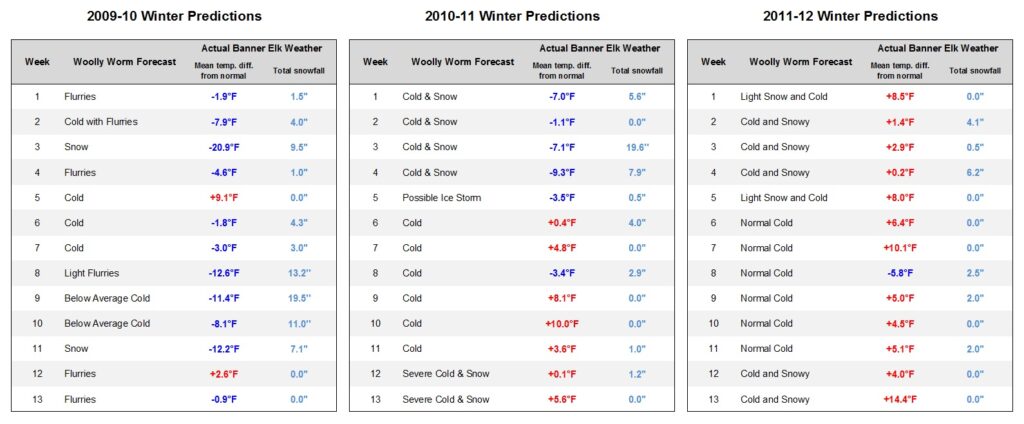This is part one in a four-part series highlighting different winter forecasting techniques.
What can a caterpillar tell us about the weather? Quite a lot, at least if you believe the folklore surrounding the woolly worm’s role in winter forecasting. But does this legend have legs? Let’s take a look at the story behind one of nature’s most well-known weathermen.

Like most caterpillars, the woolly worm (or woolly bear caterpillar, as it is sometimes called) is the larval stage of its species, the Isabella tiger moth. For folklore-based forecasters, the predictive power of the woolly worm is said to stem from its brown-and-black colored bands.
The legend says that the woolly worm’s 13 body segments can be linked with the 13 weeks of winter. Black bands are supposedly signs of cold, snowy weather, while brown bands are said to indicate milder conditions.
The woolly worm tale was popularized in the 1950s by Dr. C. H. Curran, the curator of insects at the American Museum of Natural History in New York. Over an eight year period, he collected woolly worms and measured the width of their colored bands, generally finding wider brown segments, which he linked with milder winters in New York during the same time period.
Since then, observing the bristly woolly worm has become a tradition, including here in North Carolina, where Banner Elk in Avery County has hosted the Woolly Worm Festival every October since 1978. After a series of heat races up a three-foot piece of string, the winning worm is crowned the official forecaster for the coming winter and given $1000 in prize money.
Roy Krege, a long-time festival volunteer, said that winning worms have been correct 84.5 percent of the time. Our own analysis using the last three years of weekly predictions shows an accuracy rate of between 40 and 50% — basically the same as flipping a coin to predict the weather.

However, some science suggests that there may really be a connection between the weather and the woolly worm’s colors. As they grow larger, woolly worms molt, or shed their skin. With each successive molt, more brown bands may appear, so these bands may be a good indicator of age, or essentially when the caterpillar started to grow in the spring.
If the previous winter was harsh or long-lasting, a woolly worm might be younger and darker. Of course, as entomologist Mike Peters with the University of Massachusetts notes, the colored bands may be “telling you about the previous year”, not the winter to come.
Perhaps woolly worms are really nature’s own climatologists instead of its forecasters!
Sources:
- Predicting Winter Weather: Woolly Bear Caterpillars from the Old Farmer’s Almanac
- The Woolly Worm Festival from the Avery County Chamber of Commerce
- Which way winter? Watch woolly worms! from AppalachianHistory.net
- Woolly Worm Festival official website